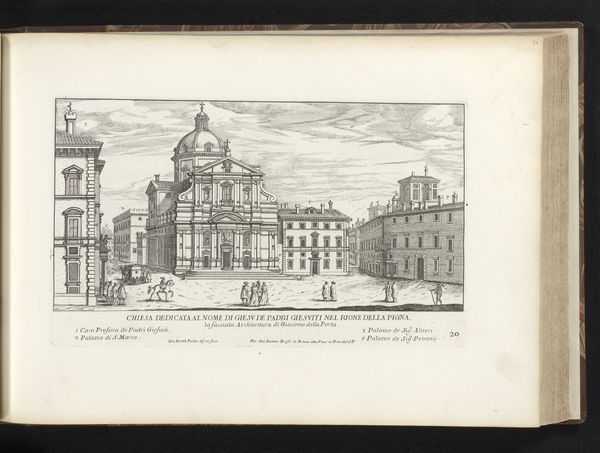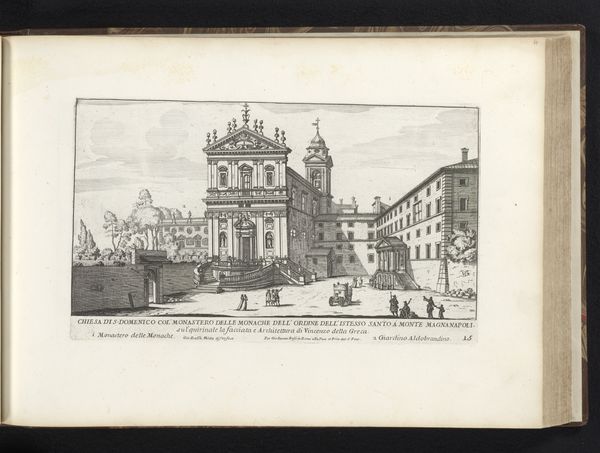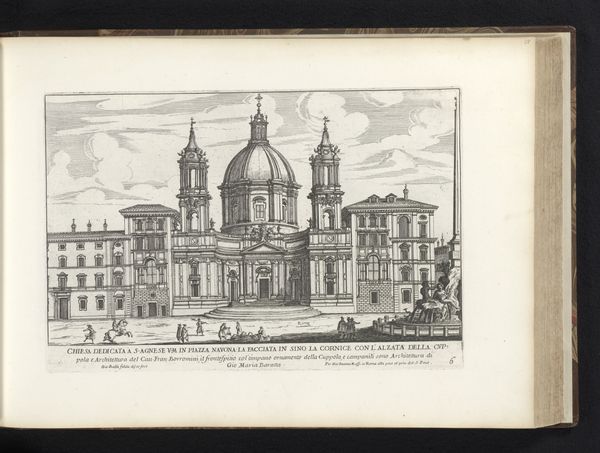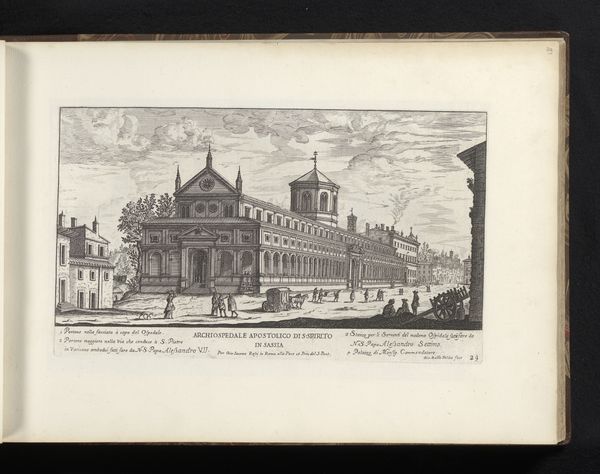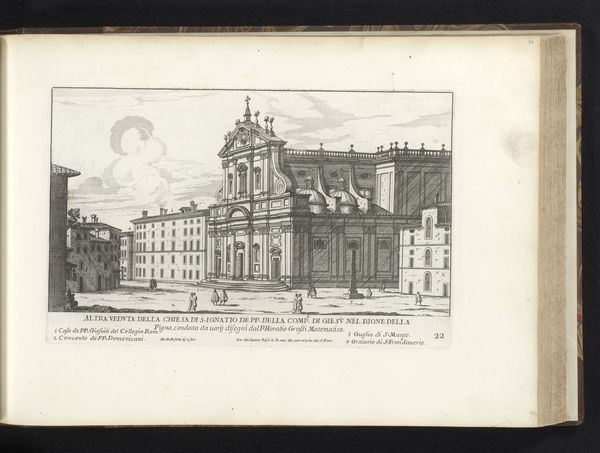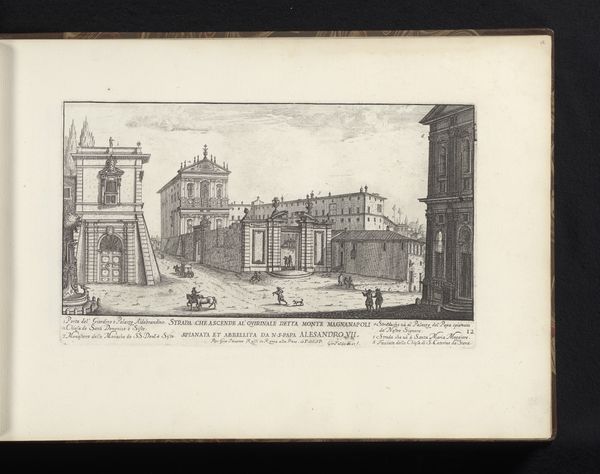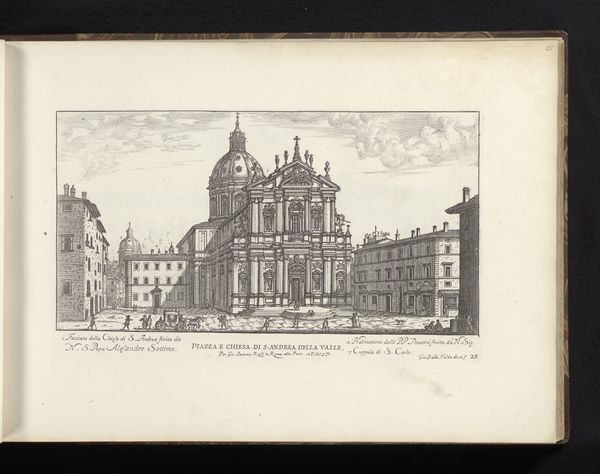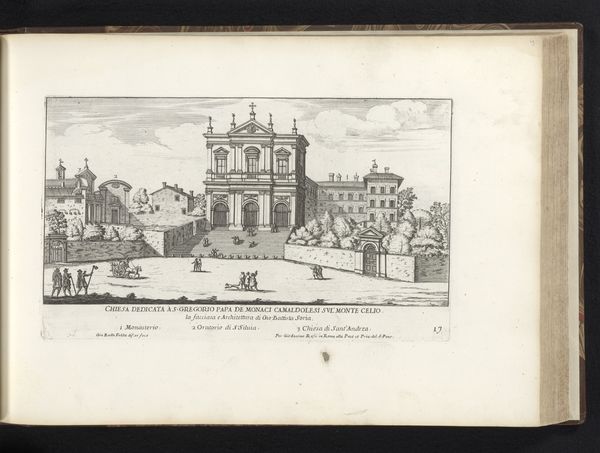
Capitool, de Santa Maria in Aracoeli en de Chiesa di Santa Rita da Cascia in Campitelli te Rome 1665
0:00
0:00
giovannibattistafalda
Rijksmuseum
print, engraving, architecture
#
baroque
# print
#
perspective
#
cityscape
#
engraving
#
architecture
Dimensions: height 174 mm, width 288 mm
Copyright: Rijks Museum: Open Domain
Editor: So, here we have Giovanni Battista Falda's engraving from 1665, showcasing the Capitool, the Santa Maria in Aracoeli, and the Chiesa di Santa Rita da Cascia in Rome. It’s striking how Falda captures such expansive architecture in such detail using only engravings. What strikes you most when you look at this piece? Curator: I immediately think of the way that the imagery reinforces and disseminates power. The print functions not merely as a representation, but as a form of urban propaganda. It helps construct Rome as the centre of religious and political authority in the 17th century, especially useful in this time of reformation and counter-reformation struggles. The immaculate churches elevated and precisely rendered using strict perspective, the implication being accessibility of political power in Rome is open to anyone; it served a key political function, right? Editor: Absolutely, I didn’t immediately consider the religious tension of the era. So the piece's clarity and accuracy actually contributes to this "urban propaganda?" Curator: Exactly. Notice how the human figures, though present, are diminished by the scale of the architecture. It’s a deliberate choice, I think. The grand buildings represent a permanent, enduring power that dwarfs the individual. How do you see the relationship between these kinds of architectural prints and the evolving role of civic identity? Editor: That’s fascinating. It shifts my focus to how cityscapes become symbolic representations, not just mere documentation. Thinking about how prints like this circulated and shaped perceptions…it makes me rethink the power of imagery. Curator: Indeed! And for me, I now consider how popular imagery is related to both those with the authority and those without power or access. It’s definitely an insight I appreciate revisiting with you.
Comments
No comments
Be the first to comment and join the conversation on the ultimate creative platform.
